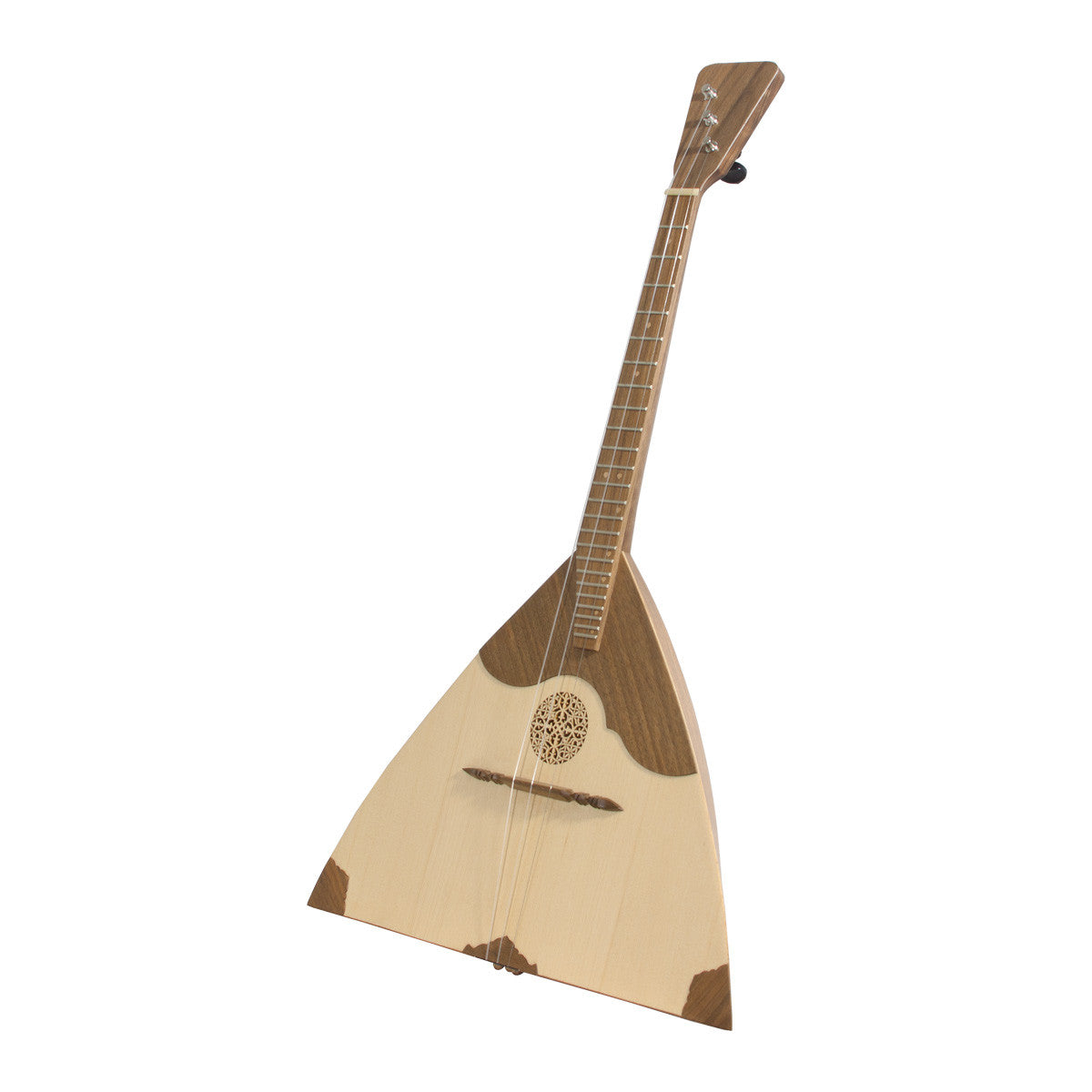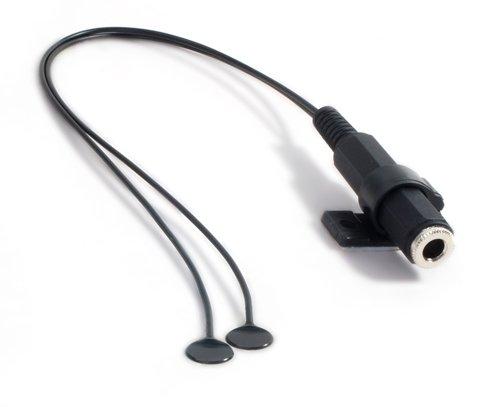Roosebeck
Balalaika, Prima - Walnut
Balalaika, Prima - Walnut
SKU:BLLPW
Couldn't load pickup availability
Introducing the exquisite Balalaika Prima, a masterfully crafted instrument that embodies the rich cultural heritage of Russia. Measuring approximately 27 inches in length, this traditional 3-stringed instrument features a scale length of 430 mm and a classic triangular body shape. The back, made with alternating staves of walnut and lacewood, offers a striking contrast to the light-colored soundboard, enhancing both its aesthetic appeal and acoustic performance. Included with the Balalaika Prima is a nylon gig bag and pick, ensuring you have everything needed to start your musical journey.
The Balalaika Prima is tuned above middle C to A, E, E (1st-3rd), with the first string being the thinnest and extending over more frets than the others. This instrument's design allows for a unique playing style, where the left hand notes the strings while the right hand strums near the neck. The walnut on the soundboard not only adds a decorative touch but also protects it from strumming wear. Embrace the historical significance and cultural depth of the Balalaika, an instrument that has evolved from the Oriental dombra and has been cherished by Russian musicians for centuries. Elevate your musical experience today by adding this timeless piece to your collection.
Features:
- Traditional 3-string design with a 430 mm scale length
- Beautifully crafted with walnut and lacewood staves
- Includes a nylon gig bag and pick for convenience
Share


Look Out For Our Unique Instruments In Andre 3000's New Album
Andre 3000 found inspiration in our one-of-a-kind instruments to create the groundbreaking sounds of his newest album.
Accessories
More-
D'Addario Planet Waves Eclipse Headstock Tuner
SKU: TUN034r
Regular price $17.99Regular priceUnit price / per -
D'Addario NS Micro Headstock Tuner
SKU: TUN032
Regular price $19.99Regular priceUnit price / per -
K&K Twin Spot Classic Pickup
SKU: PIC001
Regular price $69.00Regular priceUnit price / per -
D'Addario MICRO UNIVERSAL TUNER Chromatic Headstock Tuner with Discreet Universal Clip
SKU: TUN038
Regular price $21.99Regular priceUnit price / per -
Roosebeck Prima Balalaika String Set
SKU: RBSBKP
Regular price $11.90Regular priceUnit price / per -
 Sold out
Sold outBalalaika Bass String Set
SKU: mis176
Regular price $25.95Regular priceUnit price / per -
Lyric-C Acoustic Guitar Microphone, Nylon Strings
SKU: PIC027
Regular price $229.00Regular priceUnit price / per -
Lyric Acoustic Guitar Microphone, Steel Strings
SKU: PIC026
Regular price $229.00Regular priceUnit price / per
- Choosing a selection results in a full page refresh.
- Opens in a new window.

This chieftain ain’t bad. I would say situated in between intermediate and professional grade. A little bit thick but not too thick. I’m happy with this purchase

The skins are as beautiful as can be expected. I'll be using them for canvas in an art project in 2026. I'll be a returning customer.

I bought this 30 inch frame drum about 3 years ago (2022 I think) for use in drum circles and also for recording. It’s incredible! I wanted a drum that people could not just hear, but also feel. This one fulfills that promise very powerfully, so I call it the Boneshaker. I’ve gotten a ton of compliments about it at drum circles. It helps to hold the rhythm together very well. By playing the drum harmonics, I can find at least 3 tones to it, more depending on how I tune it. I’ve had dozens of drums and over a hundred percussion instruments over the years, but this is in the top 1% of my all time favorites. I even painted the head and it’s beautiful! Everyone at the drum circles loves it.

I bought this bodhran after I broke my more decorative one while protesting. I’m one of four women who are Drumming for Democracy every week at our local Saturday protest.

The DG-255 I received from Lark in the Morning was easily as beautiful as presented. The padded gig bag is a huge plus as well.
The guitar is a solid and has a bigger, more forward sound than I'd anticipated which suits me just fine. It plays easily, surely even more so after I have a guitar tech get it set up for me.
Nice people, excellent service, quick shipping. Nothing not to like here.














